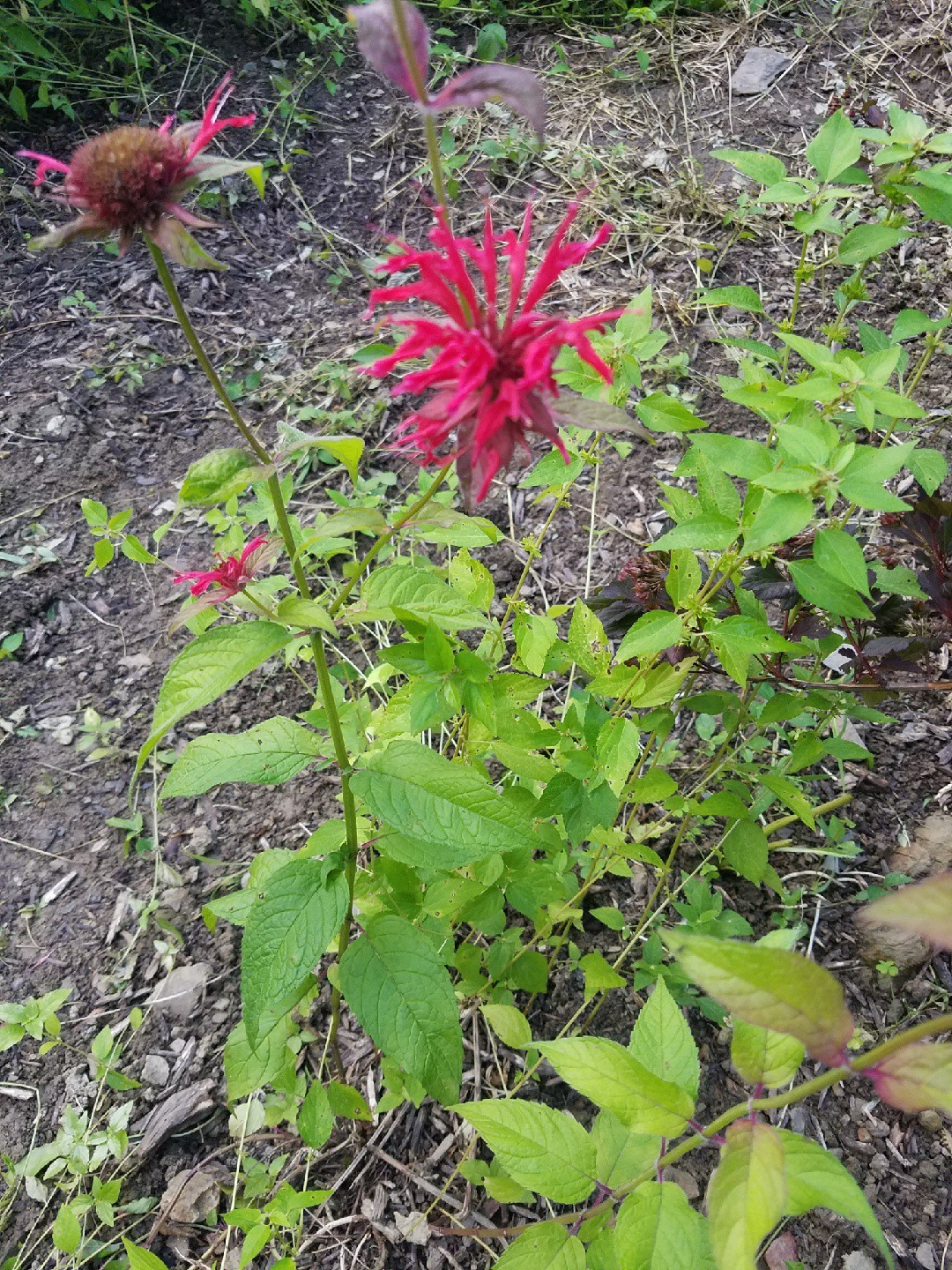I have a large open area in my backyard that is sloped where i dont want grass because it would be dangerous to mow. A couple years ago i went to a local gardening shop and asked for recommendations on a variety of flowering plants that will spread over time and take over the area. I was looking to attract butterflys, bees, and hummingbirds.
Fast forward a baby and an injured wife later, I simply didnt have the time to devote to weeding one year and it was overtaken in short order. Half of the plants have been choked out but I found the time recently to clean it up.
I have some Bee Balms like below:
I am not sure though if it is spreading very much, however there is this one plant that looks incredibly similar to me that spreads like crazy and comes back with a vengeance when i pull it. My wife told me to stop pulling these because she says it is the Bee Balm trying to spread but there are a few minor differences.
Where I planted the Bee Balm it has these beautiful red flowers however this spreading plant below does not seem to flower. The leaves and stems are very very similar but I am just not sure.
Are these the same plant? If not what kind of virulent weed is this?


